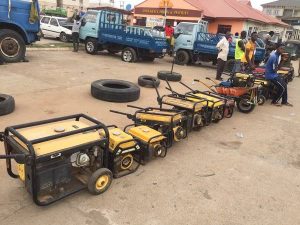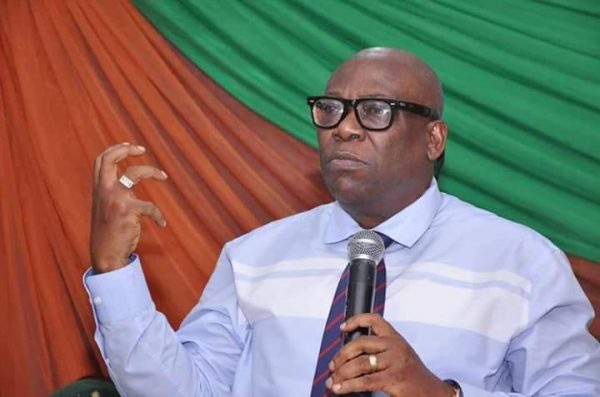Poor electricity supply worsens woes for manufacturing sector as producers spent N71.22Bn to provide alternative power In 2021 alone, pushed losses to consumers
The spending on alternative power sources particularly the generators and fuel by manufacturers in Nigeria has hit N153.13 billion in just two years.
Platforms Africa, which reports this using data from the Manufacturers Association of Nigeria (MAN), noted that the manufacturers spent N71.22billon to provide alternative energy for their operational activities for the fiscal year 2021.
Analysts say this amount would have been enough to build a few megawatts power plants that may provide stable electricity to the association members.
READ ALSO: NERC Makes N938.5m from Generators’ Importers, Others in 1 Year
Nigerians Spend ₦2.6 Trillion to Buy Fuel For Generators, Cars in 1 Year
Nigeria’s Manufacturers groan as spending on generators hits N67.38bn in one year
I Am Angry With State of Nigeria’s Power Sector – Buhari
A further breakdown of the expenditure indicates that the Association spent N45.04 billion in the second half of 2021 as against the N57.75 billion recorded in the corresponding half of 2020; thus, indicating a N12.71 billion or 22.0 percent decline over the period.

However, it increased by N12.86 billion or 40.0 percent when compared with N32.18 billion in the preceding half.
This is according to the Data collected in respect of electricity supply from the national grid to its members according to its 2021 July –December report.
The Average daily supply of electricity during the period under review was stable at 11 hours while power outage was three times per day respectively.
READ ALSO: Nationwide Blackout Looms As Electricity Workers Threaten Strike
Nigerians To Pay More For Electricity As Regulator Mulls New tariff July 1
Shell mulls Gas Supply For 255MW Electricity Project
In the second half of 2021, the average cost of borrowing in the sector from the commercial banks was 24.0 percent as against 22 percent in the corresponding half in 2020 and 19 percent in the preceding half. The cost of capital in the sector averaged 21.5 percent in 2021 as against 20.8 percent in 2020.
Consequently, the cost of loanable funds maintained key challenges to the manufacturing in the half under review notwithstanding the monetary easing stance of the Central Bank of Nigeria as underscored by the retention of the Monetary Policy Rate MPR at 11.5% with the asymmetric corridor at +100/-700 around MPR; Credit Reserve Ratio (CRR) at 27.5% and Liquidity Ratio at 30% since November 2020.
The association has, however, responded to the latest Central Bank of Nigeria’s monetary policy as it said the increase in MPR has widened the journey farther away from the preferred single-digit interest rate regime. It is not manufacturing friendly considering the myriad of binding constraints already limiting the performance of the sector.
MAN is therefore concerned about the ripple effects of this decision and its implications for the manufacturing sector that is visibly struggling to survive the numerous strangulating fiscal and monetary policy measures and reforms.
Consequently, manufacturers are hopeful that the stringent conditionalities for accessing available development funding windows with the CBN will be relaxed to improve the flow of long-term loans to the manufacturing sector at the single-digit interest rate.
The expectation is that MPC will ensure that future adjustments of MPR take into consideration the trend of core inflation rather than basing decisions on the headline and food inflation.
This will no doubt shield the sector from the backlashes from the 13.5% MPR, ramp up production and guarantee sustained growth in the overall best interest of the economy.





